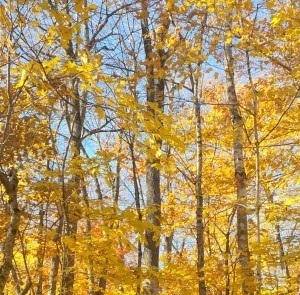Growing Sugar Maple: Takeaways From a Northern Hardwood Forestry Workshop

This past fall Stillwater Forestry LLC had the chance to attend a forest management workshop. It was hosted by the USFS at their Northeast Experimental Forest in Bartlett NH. This experimental forest is located in an area that is predominately comprised of northern hardwoods. This means that the bulk of the species present are yellow/white birch, sugar/red maple, beech and white ash.
With over 70 years of continuous forest management using a variety of management technique and coupled with scientific documentation of the results – this is a really interesting experimental forest.
One of the presenters – Bill Leak – has been working on this same forest for over 50 years and has been responsible for the majority of the different harvest techniques and their subsequent studies. Needless to say, when it comes to understanding the management of northern hardwoods - his knowledge is unsurpassed.
The Tour
The workshop was conducted outdoors and consisted of different stops at various cuts that were performed over the last 30 years. A description was given of what was present prior to the harvest followed by an informal discussion. Some of the cuts were recent and some were fairly old.
Takeaways:
Clear cutting timber is a useful forest management tool.
As a society we have been conditioned to believe, via scare mongering by the media and Big Environmental, that clear cutting is bad. However, seeing on the ground the problems that occur in stands of northern hardwoods that are continuously selectively cut its obvious that putting in small (1-5) acre clear cuts in these stands is what’s best for the long term health and well- being of the forest. Regeneration of sugar maple, ash and yellow birch will not occur in sufficient quantities without removing portions of the over-story all at once via controlled clearcutting.
Poplar and Pin Cherry are vital for improving the nutrients in the forest soil.
Poplar and pin cherry are classified as “early successional pioneer” species that grow in after a forest disturbance, live a short life ( < 50 years ) before dying off and being replaced by longer lived species of trees like sugar maple, ash, birch and beech. They essentially pave the way for these other trees to become established. Poplar and pin cherry will not become established unless the forest is clear-cut.
Studies are beginning to show that without the presence of poplar and pin cherry a post - harvest deficiency occurs in the soil that prevents sugar maple, ash and yellow birch from becoming well established. In their place less desirable species like beech become established. Over time the prolific presence of beech leads to a forest that is not healthy from both an economic and diversity standpoint.
A large number of neo tropical songbirds depend on the dense regeneration that becomes established after a clearcut.
Neo-tropical songbirds spend 8 months out of the year in the tropics. The other four are spent here in the forests of the northern hemisphere where they mate, breed and raise their young. Their numbers are in decline. Studies conducted by wildlife biologists at the Bartlett experimental forest have shown that a major factor in the decline of a number of these bird species is the loss of suitable habitat for breeding. This suitable habitat consists of medium to large openings in the forest populated by dense, brushy forestland that is between the ages of 10 – 15 years old. The only forest management strategy that can provide these conditions is clear -cutting.
As clear cutting has become less common over the last thirty years the ideal breeding habitat for these birds is disappearing. What was interesting to note was that some of these species of birds literally will not breed at all if this habitat is missing while others will but in numbers that are considered healthy. This factor helps to explain their threatened status.
Closing
Its always time well spent hearing and learning from experts who have spent time documenting their findings based upon field studies and observations. After attending this workshop I came away with a whole new perspective when it comes to managing northern hardwood stands of timber. In short – despite what we’ve been told clear -cutting is not bad. When applied with a long term goal in mind and implemented in a controlled manner the benefits of it far outweigh any negative effects. The key is to have it applied, as a management tool, in a manner that is appropriate for the age of the forest and scale of a given project. If these factors are taken into account it can be an appropriate management strategy that will produce tremendous dividends well into the future.
Are You Looking for Forest Management Services in New Hampshire or Vermont? Contact Stillwater Forestry Today!